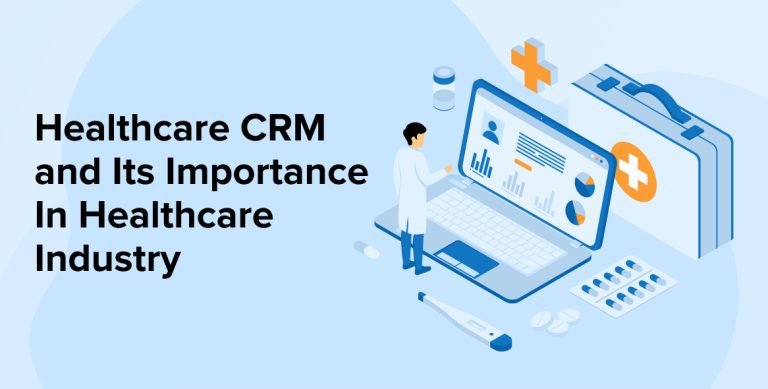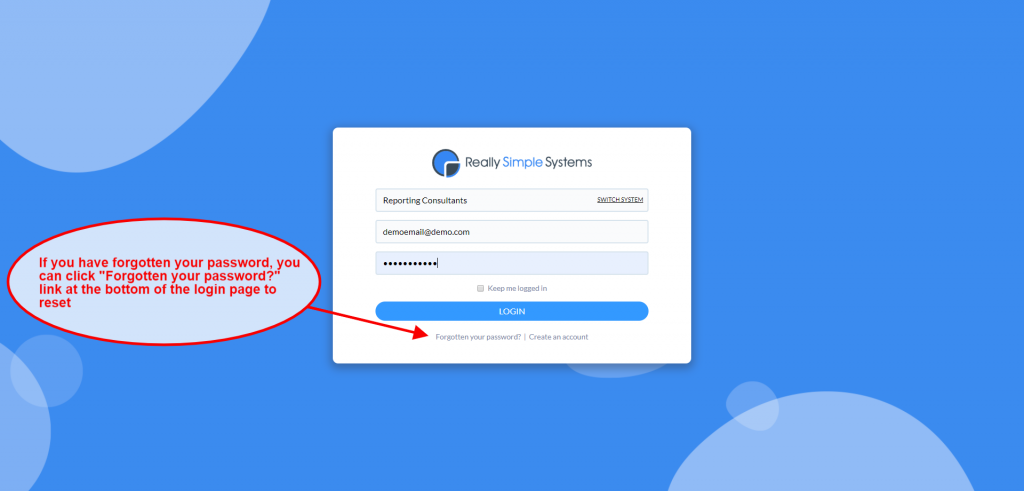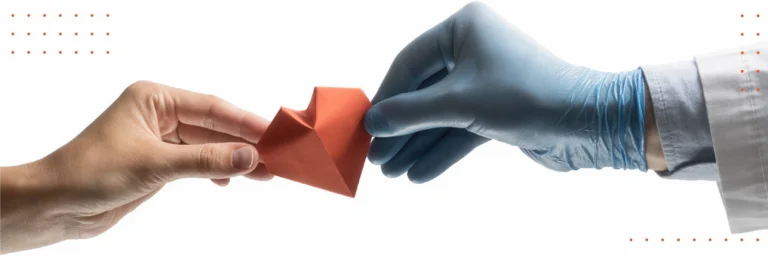The COVID-19 pandemic highlighted the urgent need for efficient and accessible healthcare management tools, especially as healthcare systems worldwide faced overwhelming demand. CRM.CovidCare.ID emerged as a specialized CRM platform designed to streamline COVID-19 patient care and resource management. With its comprehensive suite of features, CRM.CovidCare.ID empowers healthcare providers to deliver better patient experiences, improve care efficiency, and strengthen data security.
Understanding the Need for CRM in COVID-19 Care
COVID-19 management involves tracking patient health data, ensuring effective communication between healthcare providers and patients, and making real-time decisions based on rapidly changing health conditions. Traditional methods of patient tracking and communication often fall short in a high-demand pandemic context, leading to delays in treatment and potential mismanagement. CRM.CovidCare.ID is designed specifically to meet these challenges by centralizing patient information, improving data accessibility, and facilitating seamless patient-provider communication.
Key Features of CRM.CovidCare.ID

- Centralized Patient Data Management is one of the standout features of CRM.CovidCare.ID is its ability to centralize patient data, making it accessible to healthcare providers in real-time. This system records and organizes patient information such as test results, symptoms, treatment histories, and contact details in one platform. The ease of accessing this information allows healthcare providers to make faster, data-driven decisions, enhancing patient care quality and efficiency.
- Real-Time Communication and Automated AlertsEffective and timely communication is essential in managing COVID-19 patients. CRM.CovidCare.ID offers real-time messaging capabilities that allow healthcare providers to share updates, treatment plans, and other crucial information directly with patients. Additionally, the system sends automated alerts and reminders for medication schedules, upcoming tests, and virtual appointment links, helping patients stay on track with their healthcare routines.
- Telehealth Integration and Virtual AppointmentsVirtual care has become an indispensable part of healthcare during the pandemic. CRM.CovidCare.ID integrates telehealth services, enabling patients to schedule and attend virtual appointments without the need to visit healthcare facilities in person. This not only reduces the risk of exposure to COVID-19 for patients and healthcare workers but also expands access to healthcare for individuals in remote areas or those with mobility challenges.
- Advanced Analytics and Reporting ToolsCRM.CovidCare.ID goes beyond basic CRM functions by incorporating advanced analytics and reporting tools. Healthcare providers can analyze patient data trends, track recovery rates, and identify high-risk patients who may require additional care. These insights can inform healthcare strategies, optimize resource allocation, and ultimately improve patient outcomes.
- Robust Data Security and Privacy ComplianceGiven the sensitive nature of healthcare data, CRM.CovidCare.ID prioritizes data security with features such as end-to-end encryption and multi-factor authentication. The platform complies with health data regulations (like HIPAA and GDPR), ensuring that patients’ personal and medical information is safeguarded against unauthorized access.
Benefits of Using CRM.CovidCare.ID
- Enhanced Patient Engagement and Satisfaction With CRM.CovidCare.ID, patients receive timely updates and reminders, feel more connected to their healthcare providers, and experience a more streamlined care journey. This engagement can boost patient satisfaction, leading to better adherence to treatment plans and improved health outcomes.
- Operational Efficiency for Healthcare Providers By automating administrative tasks and organizing patient information on a single platform, CRM.CovidCare.ID reduces the time spent on paperwork, allowing healthcare providers to focus on patient care. The efficiency boost also means providers can handle a higher volume of patients without compromising on care quality.
- Better Resource Management and Cost Reduction: The analytics tools within CRM.CovidCare.ID helps healthcare providers allocate resources more effectively by tracking trends in patient data. This can prevent the overuse of resources like testing kits and PPE, reducing overall costs for healthcare facilities.
- Improved Accessibility for Vulnerable Populations: The telehealth features in CRM.CovidCare.ID makes healthcare accessible to people who may have difficulty traveling to healthcare facilities. This includes individuals in remote locations, those with limited mobility, or those at higher risk of severe illness from COVID-19.
CRM.CovidCare.ID in Action: Use Cases
Managing High Patient Volumes During a Pandemic
During COVID-19 surges, hospitals and clinics are often overwhelmed by patient volume. CRM.CovidCare.ID’s centralized patient data and communication tools enable healthcare providers to keep track of patients’ symptoms, manage remote consultations, and monitor patients’ recovery progress, even at high volumes. The platform’s organizational features can streamline patient intake, triage, and ongoing monitoring, helping facilities avoid bottlenecks in patient care.
Supporting Remote Patient Monitoring
For patients in isolation or those recovering at home, CRM.CovidCare.ID offers a seamless way to monitor their health remotely. The platform tracks patients’ symptoms and treatment progress, automatically updating healthcare providers on any changes. This remote monitoring ensures that even patients who are not physically present at healthcare facilities receive consistent, high-quality care.
Facilitating Communication Between Multiple Providers
In many cases, COVID-19 care requires collaboration between various specialists, including primary care physicians, infectious disease experts, and respiratory therapists. CRM.CovidCare.ID enables providers from different departments to access the same patient data, facilitating coordinated care and reducing the risk of miscommunication.
How to Get Started with CRM.CovidCare.ID
Healthcare facilities can get started with CRM.CovidCare.ID by signing up for one of its subscription plans. The platform offers flexible pricing options to accommodate various healthcare settings, from small clinics to large hospitals. Setup is straightforward, and the platform’s user-friendly interface makes it easy for healthcare providers to get acquainted with the system quickly.
How do I create a CRM ID?

Here’s a step-by-step guide to creating a CRM ID:
1. Choose a CRM Platform
Begin by selecting a CRM platform that suits your business needs. Popular CRM platforms include:
- Salesforce
- HubSpot
- Zoho CRM
- Microsoft Dynamics 365
- CRM.CovidCare.ID (for healthcare-specific needs, like COVID-19 patient management)
Research each platform’s features, such as customer segmentation, communication tools, analytics, integrations, and pricing. Many platforms offer free trials, so you can test them before committing.
2. Sign Up for an Account
Visit the CRM provider’s website and look for an option to Sign Up or Get Started. This will typically lead you to a registration form.
- Enter Your Basic Information: Provide details such as your full name, business email, phone number, and company name.
- Set a Username and Password: Choose a strong password for security, as CRMs store sensitive customer data.
- Choose a Subscription Plan: Many CRM platforms offer different plans based on the number of features, users, and storage space. Pick a plan that aligns with your needs.
For example, CRM.CovidCare.ID may have options based on the healthcare provider’s size or usage needs.
3. Verify Your Email or Mobile Number
After registering, you’ll usually receive an email verification link or an OTP (One-Time Password) sent to your phone. Complete this step to activate your account.
- Click the Verification Link in your email, or
- Enter the OTP on the CRM’s registration page.
4. Complete Your Profile
Once logged in, you may need to fill out additional information to personalize your CRM experience:
- Company Details: Include your business address, website, industry type, and team size.
- Role and Permissions: For organizations with multiple users, the CRM will ask for roles and permissions (e.g., admin, salesperson, customer support).
- Personal Preferences: You can often set preferences for notification types, language, and time zone.
5. Add Team Members (If Applicable)
If you’re using the CRM with a team, add users by inviting them via email. Assign roles according to your CRM’s permissions structure.
- Invite Users: Typically done via email from within the CRM dashboard.
- Assign Roles: Define what each team member can access, such as customer data, analytics, or communication tools.
6. Customize Your Dashboard
Most CRM systems let you customize the dashboard to show relevant information, such as:
- Customer Lists
- Sales Pipelines
- Task Management
- Analytics and Reports
For example, in CRM.CovidCare.ID, you might include sections for patient data, test results, and treatment progress, allowing healthcare providers to manage cases efficiently.
7. Integrate with Other Tools
Integrate your CRM with tools you use regularly, like email services, social media platforms, or marketing automation tools. This centralizes your data and automates repetitive tasks.
- Link Email: Sync with your email for seamless communication tracking.
- Integrate Calendars: Sync your calendar to schedule follow-ups or appointments.
- Social Media & Analytics: Connect social accounts or analytics tools if your CRM supports them.
8. Import Customer Data
To get started immediately, you may import your existing customer data. Most CRMs allow you to upload CSV or Excel files containing customer information.
- Check Import Format: Use templates provided by the CRM to avoid import errors.
- Map Data Fields: Match your data fields (e.g., Name, Email, Phone) to the CRM’s fields for accurate import.
- Verify Data Post-Import: Review imported data to ensure accuracy.
9. Explore CRM Features
Familiarize yourself with key features by exploring the CRM’s tutorial or help section. Most CRMs provide in-depth guides or customer support to help new users.
- Try the Dashboard: Navigate the dashboard to view customer info, tasks, and analytics.
- Practice Automation: Test email templates, notifications, and workflow automations.
- Check Reports: Generate sample reports to understand customer behavior and sales trends.
10. Create Your Unique CRM ID
Your CRM ID is usually auto-generated upon account creation and is linked to your email or username. This ID is what you and others in your team use to log in or identify your profile in the CRM system.
- Access Your CRM ID: Find it in the “Account” or “Profile” section if it’s not visible on the dashboard.
- Use It for Support: When contacting CRM support, your CRM ID helps them quickly pull up your account.
What is record ID in CRM?

A Record ID in a CRM system is a unique identifier assigned to each individual record within the CRM database. This ID is crucial because it distinguishes each entry—whether it’s a customer, contact, company, lead, or any other item—allowing the CRM to manage and retrieve information accurately.
Key Aspects of a Record ID:
- Uniqueness: Each record ID is unique within the CRM system. It prevents data duplication and ensures each entry has a distinct reference, which is essential for maintaining data integrity.
- Structure: The format of a record ID varies across CRM systems. It may be a simple numeric value, an alphanumeric code, or a combination of letters, numbers, and symbols. For example, some record IDs look like
001ABC123or123456789. - Purpose and Functionality:
- Data Retrieval: Record IDs make it easy for the system to pull specific information. When you want to view or update a particular record, the CRM uses this ID to locate it without confusion.
- Integration and Data Syncing: Record IDs are essential when integrating CRM data with other systems. External tools can reference the same record via its ID, ensuring data consistency across platforms.
- Tracking and Reporting: Since each record has a unique ID, reports and analytics can accurately reference individual records, helping with precise tracking and analysis.
- Where You See Record IDs in CRM:
- Database Tables: Record IDs appear in backend tables where CRM data is stored.
- User Interface: Some CRMs display record IDs on the user interface for quick reference, especially in settings where data management is frequent.
- URLs: When viewing a specific record in a web-based CRM, the record ID often appears in the URL, acting as a direct reference to that record.
Practical Example
If you have a customer named John Doe in your CRM, his record ID might be something like CUST-1234. Every time you or the CRM system needs to access his information, it uses this record ID to pull up details like his contact info, purchase history, and interactions. Even if there’s another John Doe in the system, the record IDs will be different, keeping their data separate and easily identifiable.
In summary, the Record ID is a foundational element in CRM data management, ensuring every piece of data remains organized, accessible, and unique within the system.
What is CRM ID in banking?
In banking, a CRM ID is a unique identifier assigned to each customer within the bank’s Customer Relationship Management (CRM) system. This ID helps the bank track, manage, and service individual customer accounts and interactions efficiently. It serves as a primary reference for all customer-related data, enabling a centralized view of a customer’s banking relationship, transactions, and communications.
Key Functions of a CRM ID in Banking
- Centralized Customer Profile:
- The CRM ID consolidates a customer’s information—such as personal details, account numbers, transaction history, loans, and investments—into a single profile within the bank’s CRM system.
- It enables bank employees to access a comprehensive view of the customer’s relationship with the bank, including various accounts, services, and interactions.
- Personalized Customer Service:
- When a customer contacts the bank, the CRM.CovidCare.ID helps service representatives quickly retrieve their profile, allowing them to address specific inquiries or issues without needing to search through multiple systems.
- With all information linked to the CRM ID, bank staff can offer personalized recommendations, cross-sell relevant products, and provide better support.
- Efficient Data Management and Analytics:
- The CRM ID facilitates data analysis by providing a reliable way to group and analyze customer information. Banks use CRM data to track customer behavior, segment clients, and design targeted marketing campaigns.
- With CRM analytics, banks can improve customer retention by identifying customers at risk of leaving and taking proactive steps to address their needs.
- Seamless Integration Across Departments:
- The CRM ID links a customer’s data across departments, from personal banking and loans to investment services. This integrated view allows different departments to collaborate effectively in managing the customer’s needs.
- Enhanced Security and Compliance:
- A CRM ID helps maintain a secure and compliant record of customer data. The unique ID ensures that customer information is properly managed and only accessible by authorized personnel.
- The bank can also use the CRM ID to track interactions, document consents, and follow regulations related to data privacy, such as GDPR.
Practical Example of a CRM ID in Banking
For example, suppose a bank assigns a CRM.CovidCare.ID to a customer named Sarah Johnson. This ID links all her accounts (checking, savings, credit card, and loan accounts) to one profile. If Sarah contacts the bank, customer service representatives can use her CRM ID to instantly pull up her profile, view her account details, review her recent transactions, and provide tailored assistance.
Frequently Asked Questions (FAQs) About CRM.CovidCare.ID
- Is CRM.CovidCare.ID only for COVID-19 care?
While the platform is optimized for COVID-19 management, its features can be adapted for other healthcare applications, including general patient management and chronic disease monitoring. - How does CRM.CovidCare.ID ensure patient data security?
CRM.CovidCare.ID incorporates high-level security measures, including end-to-end encryption, role-based access controls, and compliance with global health data regulations. - Can CRM.CovidCare.ID be integrated with existing healthcare systems?
Yes, CRM.CovidCare.ID offers integration options that allow it to connect with electronic health records (EHRs) and other healthcare management systems, providing a seamless workflow.
Conclusion: The Future of COVID-19 Healthcare Management with CRM.CovidCare.ID
As the world continues to face COVID-19 challenges, healthcare providers need innovative solutions to manage patient care efficiently and effectively. CRM.CovidCare.ID stands out as a powerful tool that simplifies patient data management, improves patient engagement, and enhances healthcare accessibility. By leveraging this platform, healthcare facilities can navigate pandemic demands while maintaining high standards of patient care.
CRM.CovidCare.ID isn’t just a response to the pandemic; it’s a forward-looking CRM solution that’s poised to transform the landscape of healthcare management. With its holistic approach, CRM.CovidCare.ID not only meets the immediate needs of COVID-19 care but also sets the stage for a new era of connected, data-driven healthcare.
